It’s time for a special kind of retrospective of the year 2018. In the past 12 months, three of my favourite manga series of the past decade ended – titles that, to me, could be called instant classics. In the rush of new manga publications, it can always be a little hard to remember the good stuff that no longer have an on-going status. For this reason, I’m taking a loving look back at these three now finished yet unforgettable works of art: Kamatani Yuhki’s LBGTQ coming-of-age drama Shimanami Tasogare, Andou Yuki’s Machida-kun no Sekai with its one-of-a-kind protagonist, and Stand Up! by clb.org favorite Yamakawa Aiji.
Shimanami Tasogare by Kamatani Yuhki
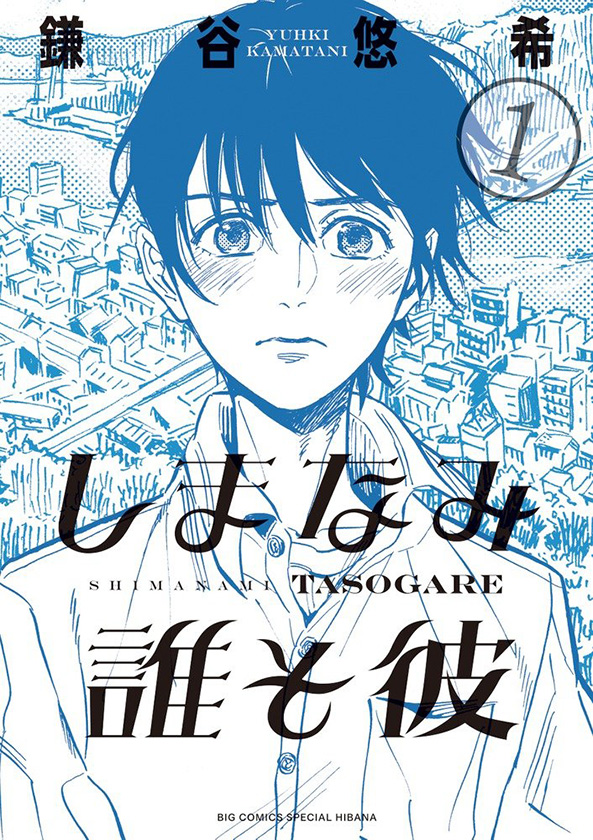
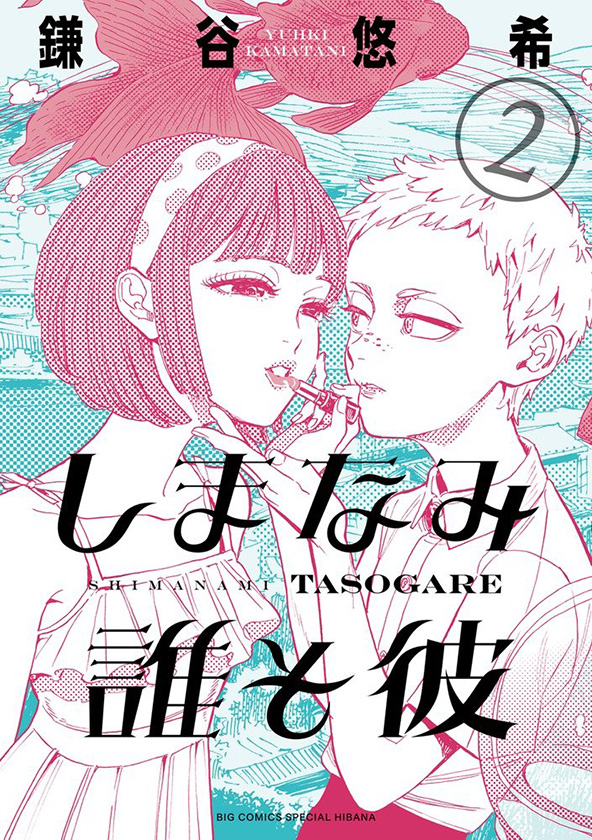
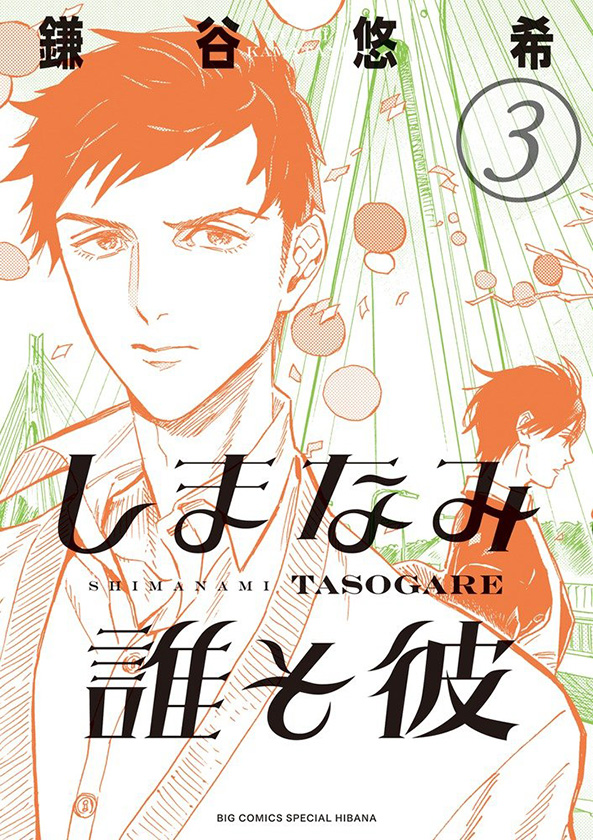
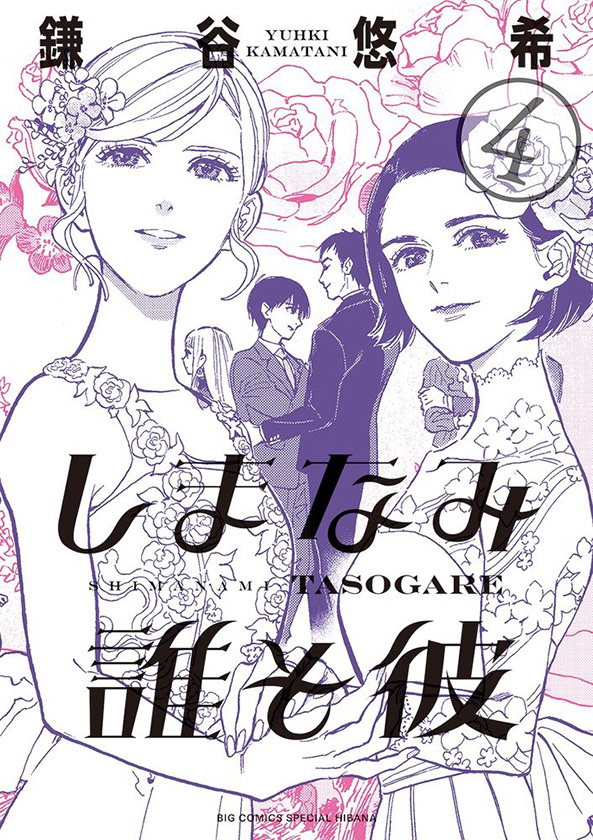
Fiction and art can function as safe spaces in which difficult, even traumatic experiences can be narrated, relived, analyzed, discussed, dissected and brought to the attention of other people. The 4-volume series Shimanami Tasogare was created by X-gender manga artist Kamatani Yuhki for whom the series itself can be seen as such a safe space as it focuses on people who belong to different sexual and gender minorities. And at the same time, the series itself shows how discriminated and oppressed people fight to create such safe spaces for themselves.
The main cast of characters in this extraordinary series are brought together by renovation projects in Onomichi, a city located in Hiroshima prefecture in southern Honshu, facing the Seto Inland Sea (Setouchi) with its smaller islands and Shikoku to the south. In the beginning, teenage boy Tasuku fears he’s been forced to come out as gay by his classmates. The four volumes in part tell his journey of coming to terms with his own sexuality while he meets other intriguing individuals and is invited to join them in their non-profit work. These other volunteers, among them the mysterious and elusive Dareka-san, each identify as sexual and gender minorities (i.e. they are homosexual, asexual, transgender, non-binary, etc.) but are also varied in their personal backgrounds and ages. It is part of Tasuku’s and the reader’s journey through the series to learn that each individual is allowed to take their own time with coming out (or not at all) while they are confronted with society’s prejudices, discrimination and violence against them.
Their safe place is an old but cozy house in the hills of Onomichi which they’ve renovated as part of their volunteer work, offering a space where they can be themselves, relax, listen to music and discuss various matters without having to fear discrimination. This is a place they have created for themselves but it doesn’t stop here. Through their non-profit work of refurbishing traditional but derelict houses and finding new purposes for them, they try to bring renewed life – for everybody! – to an area that’s characterized by an aging population, urbanisation and younger people moving to the big metropolitan centers. Together, they are committed to keep this area they love alive. And thus, next to the memorable and diverse cast, a second lead character emerges through the manga’s beautiful art: the hilly seaside landscape of titular Shimanami itself, the city of Onomichi and its roads and bridges connecting it to the small islands, evoking a gentle nostalgia, a slowing down of events (especially in the hot summers, the seasonal background of most of Shimanami Tasogare), a dreamlike and peripheral idyll.
Despite the dramatic events of the manga, the series ultimately leads to a positive message as it promises hope for a more open, accepting society which protects its minorities and, literally, let’s them claim their own spaces. The moving and mysterious story is carried by its expressive, sometimes even surrealist art which is heavily influenced by shÅjo manga without it having to proclaim to be either this or that, seinen or shÅjo/josei manga – which all points back to the essence of the story itself. The manga was serialized in Hibana (until its demise in 2017), a seinen manga magazine featuring a lot of female artists known for their shÅjo/josei manga publishing gender-free/cross-over works for a mature readership in it. Shimanami Tasogare finally ended with its 4th volume in 2018, a book that brought me tears of pain, anger and joy – in this order. It is now making its way around the world, offering most of all the LGBTQ+ community, but also everyone who feels a little different than the mainstream, a source of understanding and support while speaking the very global, universal language of humanism. It is currently available as Eclat(s) d’âme in French by Akata, in Italian by J-Pop as Oltre le onde, in Spanish as Sombras sobre Shimanami by Tomodomo while Seven Seas will bring Our Dreams at Dusk to English readers, with the first volume scheduled for a May 2019 release and the 4th volume to be published before the end of 2019. Without a doubt, this will be a must-read for years to come. 4 volumes, Big Comics Special Hibana, Shogakukan.
Machida-kun no Sekai by Andou Yuki
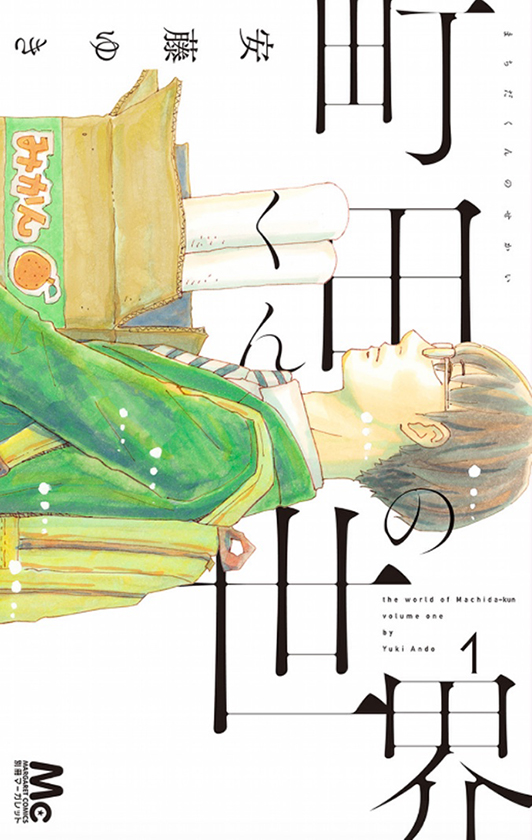
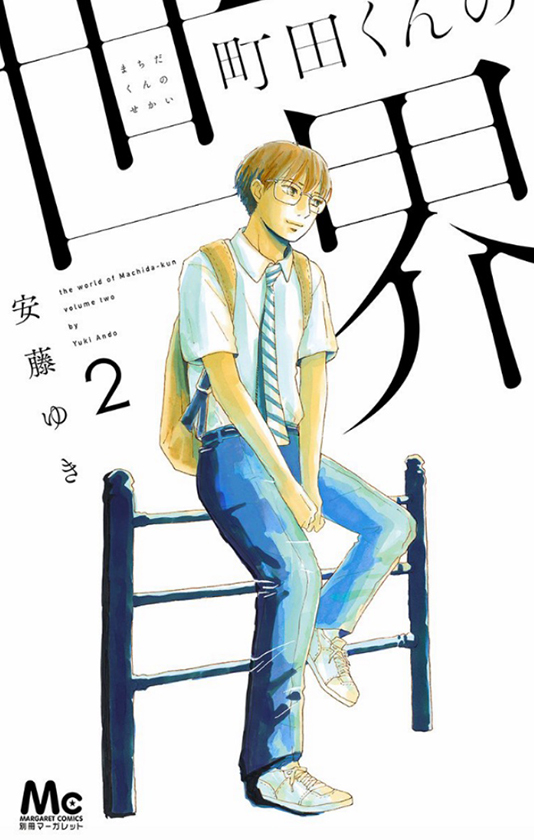
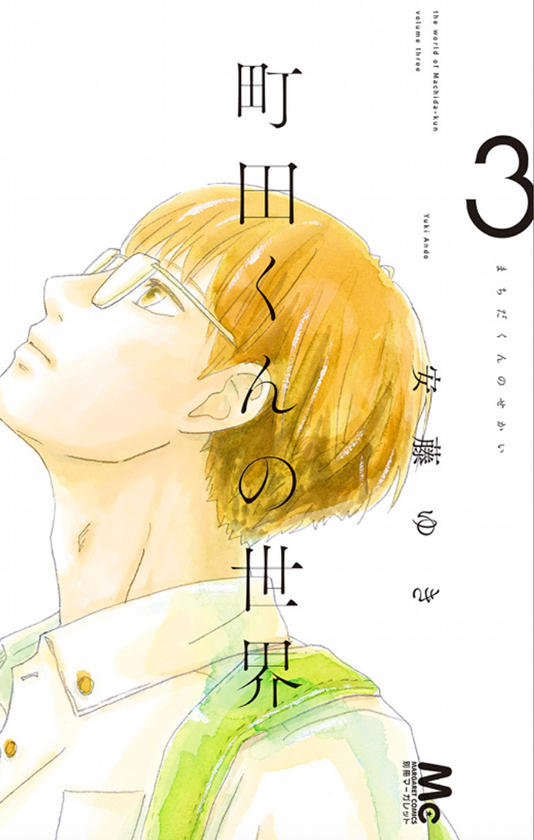
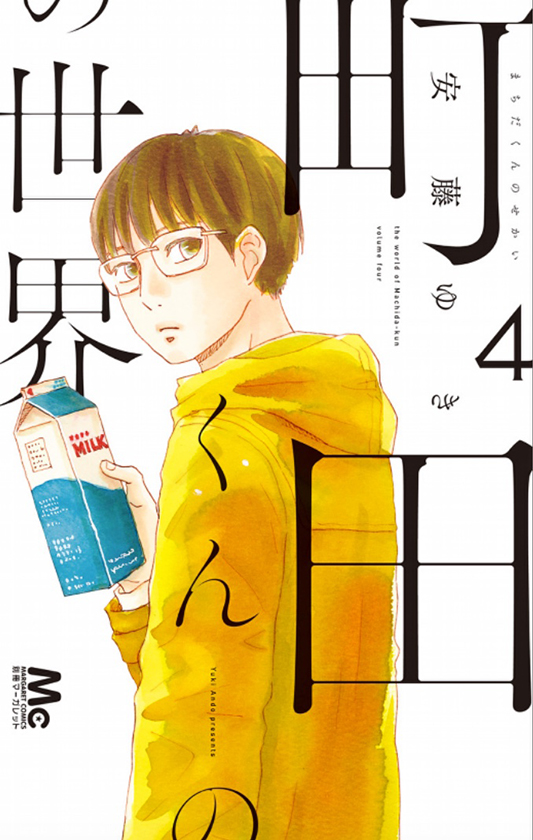
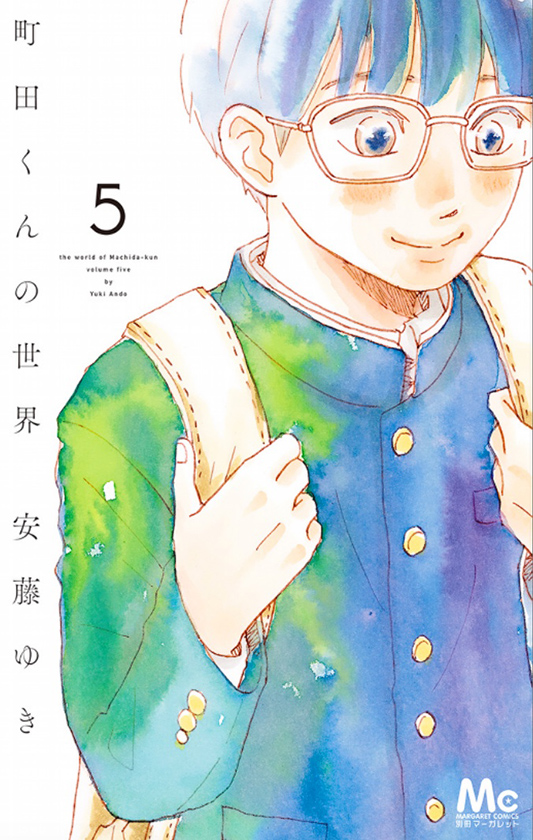
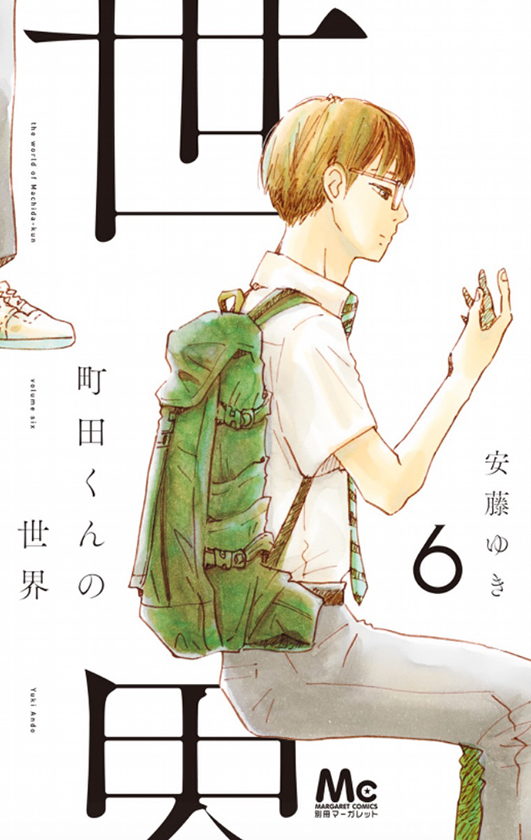
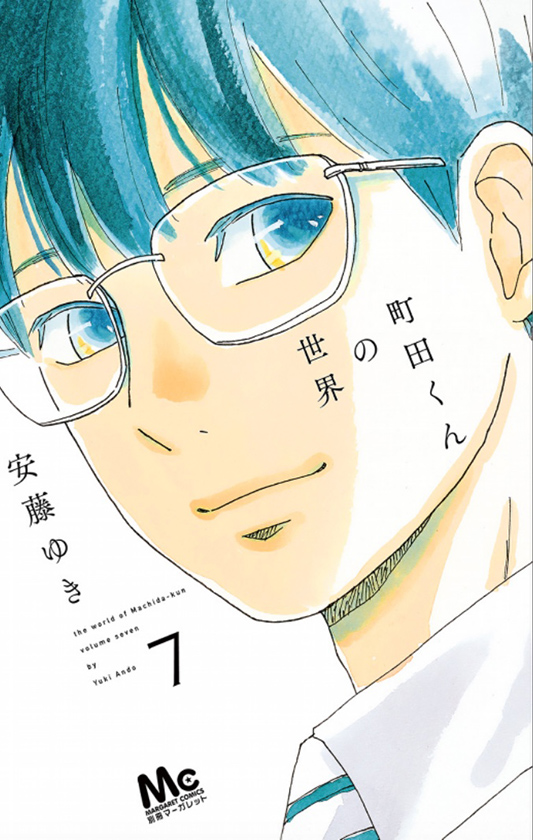
It would be no exaggeration to say that this Betsuma series quietly revolutionized what mainstream shÅjo manga can be. Machida-kun no Sekai‘s male protagonist, the titular Machida Hajime, is perplexing in his selflessness and at the same time in his lack of qualities usually found in male protagonists of shÅjo manga: he is clumsy, a bad student (despite his glasses giving him a scholarly look) and terrible at sports. But also self-sacrificing, completely devoted to the well-being of his – rather big – family, especially his younger siblings, but also his friends and complete strangers. For large parts of the story, the non-dialogue is not inner monologue, as would be typical for shÅjo manga. Instead, a unique observing voice describes in a dry, honest, objective way how Machida sees the world, how he “turns on his antennas” and becomes receptive to the needs of the people around him. These parts read like the voice-over of a documentary, an impression that’s visually supported by thick frames around panels bringing order to the page layouts and the clean art, especially in the architecture and backgrounds. Throughout the manga, the point of view switches, and these descriptions are replaced by the inner monologue of people, strangers and friends, watching Machida, judging him, being surprised or even inspired by him. And then in the later parts, we finally get to look a little more into the inner workings, the thoughts and emotions of Machida as we approach the finale of what is ultimately the love story between Machida-kun and his classmate Inohara-san.
Inohara takes on the part that is usually reserved for the male counterparts of the female protagonists in shÅjo manga. Her rough behaviour is explained as her personal background and her past sufferings are revealed bit by bit. Her healing process is propelled forward by Machida-kun but also through her friendship with Maki. Inohara may come across as ‘cool’ to the reader: you may feel sympathy for her, but she still seems distant. And the same can be said about Machida-kun who is so often observed from the outside. Yet this is exactly what makes the tone of this work so unique and such a pleasant change from the usual shÅjo manga mainstream.
Machida-kun no Sekai stresses the importance of friendships by showing how to build and maintain them, of caring for others across all boundaries of age, gender, sex and social class; of family – siblings, parents, parents’ siblings. And this family is one that is always open to outsiders – older neighbours and, of course, the girl Machida likes. The ending might seem conservative yet it stresses the value of family itself and of this openness toward accepting outsiders. When you take that into consideration, the ending ties everything together beautifully. The light here always shines brighter here than the darkness. Weaknesses can be overcome or accepted, as strength can be found through the help of others. The series, AndÅ’s first longer work, is so calm and mature in its tone and message that it can be recommended to readers who usually prefer manga for older audiences (both josei manga for female readers as well as seinen manga for male readers!). 7 volumes, Margaret Comics, Shueisha. A live-action movie adaptation is opening in Japan in June 2019.
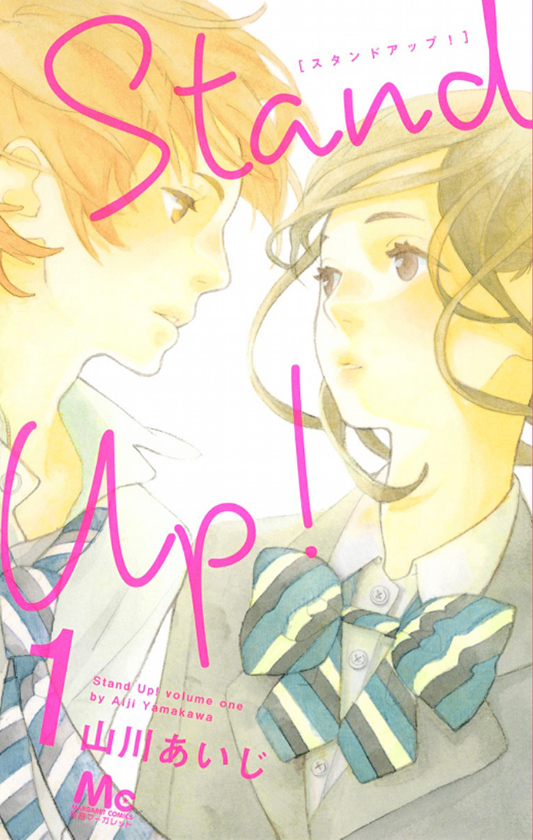

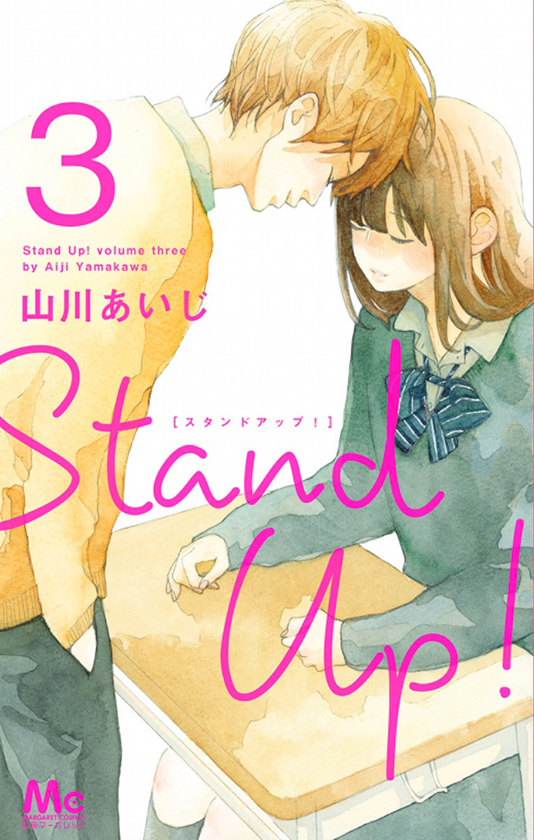
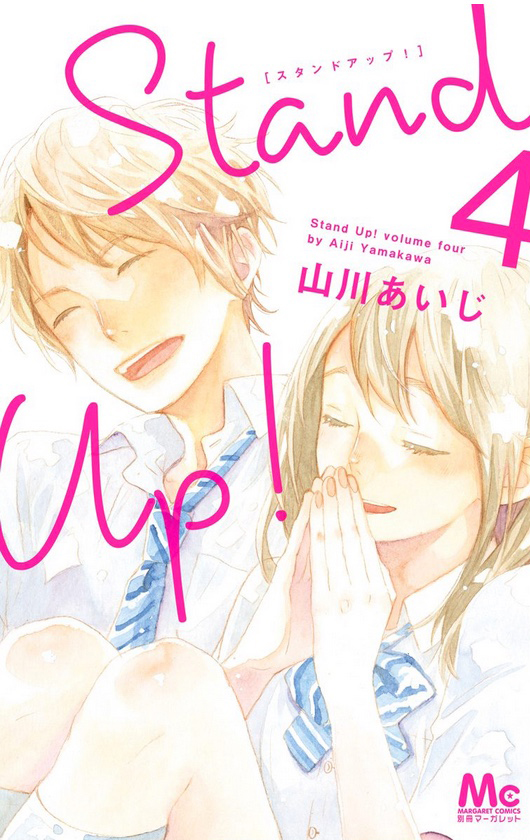
Like Machida-kun no Sekai, Yamakawa Aiji’s Stand Up! started its journey in Shueisha’s monthly shÅjo manga magazine Betsuma, but was later relegated to its sister magazine The Margaret until it reached its finale in spring 2018 after a 3-year hiatus. (You can find more about Yamakawa Aiji and her career in our artist profile.) These magazines are mainly aimed at senior high school-aged girls and manga running in them have to operate within a certain framework. In Betsuma‘s case, the majority of titles features realistic stories while focusing on romance of the ‘pure’ kind (i.e. no sexual depictions of any kind, unlike shÅjo manga magazines from other publishers), friendship and family. The Japanese school year, and more broadly, the 3 years at senior high, set the timeframe within which these stories are usually told. This is no different for both AndÅ’s Machida-kun and Yamakawa’s Stand Up!. But both have in their own ways widened the possibilities of Betsuma‘s tight set of rules.
So it is in this hermetic world of a Japanese senior high school and its daily afterschool activities which last well into the afternoon that Stand Up!‘s two protagonists meet. Utako and Naoyuki are classmates and they couldn’t be more different. Utako always stands out with her current height of 172 centimeters when in fact she’d rather just be invisible to everybody because she is painfully shy and on top of it, feels embarrassed because of her big ears. Naoyuki is very popular and easily makes friends because he can make everybody feel comfortable. But then he starts teasing Utako for her ‘monkey ears’ – and Utako for once feels strangely glad to be noticed. It doesn’t take too long until the two fall in love and become a couple. Which adds to Utako’s stress because with Naoyuki at her side, there’s absolutely no way now she can make herself not be noticed anymore. Through the typical events of the Japanese school year and the couple’s dates during their private time, the two figure out the other’s weaknesses while also growing stronger as individuals and as a couple. These scenes perfectly convey the sense of embarrassment and confusion that’s so typical of that stage in life. Growth here comes gently and without the over-the-top drama that would be used by other artists.
What really stands out in this series is how well the dynamics of the group of friends with the Utako/Naoyuki couple in the center are described. On the side of the female characters, it’s encouraging to read how both Utako and her best friend manage to overcome past toxic relationships and move forward. Naoyuki, on the male side, is an incredibly fascinating character. Like Machida-kun’s family in AndÅ’s manga (see above), Naoyuki has a strong family background. His family owns a small restaurant and he’s been taught to be open, friendly and supportive. Just like with his group of friends which here isn’t an impenetrable entity. It is always open to outsiders, it doesn’t close itself off. The most obvious example for this is a boy named Inui, a hikikomori who no longer comes to school. The classmates decide to visit him and offer him their help. When he rejects them, Naoyuki doesn’t let up as he genuinely cares about those around him – and one day, Inui starts explaining his background to Naoyuki which ultimately leads to his healing. Interestingly enough, unlike the genre conventions, this is not a plot device to make Naoyuki seem like the perfect, knight-like partner to Utako. Naoyuki genuinely treats every person around him with respect and listens to them. His motivation isn’t to make himself more attractive to his girlfriend or to impress her, which is a nice vision of how men can be without losing a bit of their masculinity.
Through caring and nurturing friendships and relationships, these characters create an accepting and understanding environment. The atmosphere here is always warm and positive, never superficial or even hostile. Even the most painful experiences or desperate-seeming situations can be overcome here with hope, healing and forgiveness. If these young people were real and kept this attitude, imagine what empathetic and caring adults they could become, what a great society they could help build…! In this way, through the vehicle of school romance shÅjo manga, Yamakawa tells a humanistic story that’s positive without being too loud, without being violent. This gentleness is reflected in the art, in the warm palette of beiges and browns of the hardly there watercolour illustrations which seem almost like faded but fond memories.
It is really impressive that despite her struggles with her work as a manga artist, Yamakawa Aiji finished Stand Up! by picking up the pre-hiatus strands perfectly and seamlessly. The art of the newer material is just as fluid and full of motion and life-like gestures as it used to be and convincingly concludes the story. As airy and light Yamakawa’s art is, as complex is the psychological fleshing out of her characters. Like I wrote in Yamakawa’s artist profile and in the post concerning her 2018 comeback, I’m still convinced she is an extremely gifted talent, even if her professional career is riddled with periods of absence & hiatus. Now that there seem to be dark clouds on the horizon again (her latest series 2.43 Seiin KÅkÅ Danshi BarÄ“-bu in collaboration with Kabei Yukako in Cocohana is on indefinite hiatus again), I wish to see more from her in 2019 and hope that circumstances will allow her to release her work again soon! 4 volumes, Margaret Comics, Shueisha.

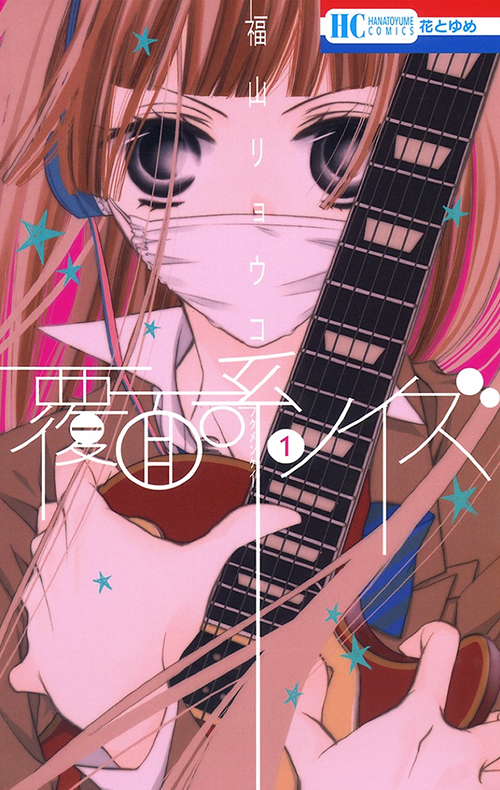 As a young girl, Arisugawa Nino used to sing with Yuzu, the boy living in the house next to her family’s, which gave her strength and comfort when her parents were fighting. Yuzu moves away one day but Nino is lucky enough to become friends with Yuzu, a boy who composes songs for Nino until he too moves away. Nino is determined to find both Nino and Yuzu again through her singing voice which might lead them back to her. Now, in senior high, Nino is surprised to meet Yuzu who is secretly in the popular newcomer band in NO hurry to shout (Inohari) whose members are wearing bandages and eye-patches to hide their identities. Yuzu asks Nino to join them as their lead singer Alice and this inspires him to write new songs for the band. Nino doesn’t yet know that none other than Momo is now a) a famous pop composer, b) the bassist of a band called SILENT BLACK KITTY (Kuroneko) criticized for being an Inohari copy band plus c) a student in the school Nino and Yuzu attend. When they finally meet again, Momo rejects Nino as he secretly feels ashamed he sold his songs originally written for Nino to other pop singers while Yuzu also has his eyes set on Nino, his Alice – another one-sided love in this triangle that fuels the creative energy of these three young people.
As a young girl, Arisugawa Nino used to sing with Yuzu, the boy living in the house next to her family’s, which gave her strength and comfort when her parents were fighting. Yuzu moves away one day but Nino is lucky enough to become friends with Yuzu, a boy who composes songs for Nino until he too moves away. Nino is determined to find both Nino and Yuzu again through her singing voice which might lead them back to her. Now, in senior high, Nino is surprised to meet Yuzu who is secretly in the popular newcomer band in NO hurry to shout (Inohari) whose members are wearing bandages and eye-patches to hide their identities. Yuzu asks Nino to join them as their lead singer Alice and this inspires him to write new songs for the band. Nino doesn’t yet know that none other than Momo is now a) a famous pop composer, b) the bassist of a band called SILENT BLACK KITTY (Kuroneko) criticized for being an Inohari copy band plus c) a student in the school Nino and Yuzu attend. When they finally meet again, Momo rejects Nino as he secretly feels ashamed he sold his songs originally written for Nino to other pop singers while Yuzu also has his eyes set on Nino, his Alice – another one-sided love in this triangle that fuels the creative energy of these three young people.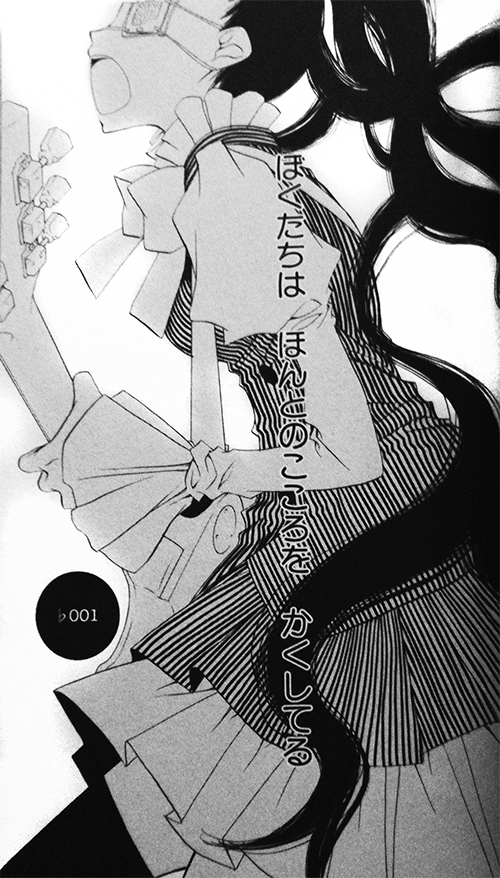 This is the premise of Fukuyama RyÅko’s manga Fukumenkei Noise (Anonymous Noise) which has been running in Hakusensha’s Hana to Yume magazine since 2013, with 12 comic volumes published so far. This is already quite a long series with probably much more material to follow but it doesn’t take more than the first and a little bit of the second volume for the foundation of the plot to be established. One copyline repeatedly used for the series is “Kokoro kakushita kataomoi melody” which roughly translates to “The melody of unrequited love hiding our try feelings” and cleverly refers to Fukumenkei Noise‘s two main elements: romance and music. Inohari’s and Kuroneko’s respective roads to success and their rivalry always run parallel to the main love triangle with all those feelings of attraction and the need for distance it entails plus the side stories also filled with stories of unrequited love. We have Nino who is in love with Momo, Momo who won’t allow himself to return Nino’s feelings, Yuzu who has more than just feelings of inspiration for Nino, Miou who has a crush on Yuzu, Haruyoshi who wants Miou to forget about Yuzu, Kuro who is in love with his older brother’s wife… Yes, we’re in for quite a bit of heartache.
This is the premise of Fukuyama RyÅko’s manga Fukumenkei Noise (Anonymous Noise) which has been running in Hakusensha’s Hana to Yume magazine since 2013, with 12 comic volumes published so far. This is already quite a long series with probably much more material to follow but it doesn’t take more than the first and a little bit of the second volume for the foundation of the plot to be established. One copyline repeatedly used for the series is “Kokoro kakushita kataomoi melody” which roughly translates to “The melody of unrequited love hiding our try feelings” and cleverly refers to Fukumenkei Noise‘s two main elements: romance and music. Inohari’s and Kuroneko’s respective roads to success and their rivalry always run parallel to the main love triangle with all those feelings of attraction and the need for distance it entails plus the side stories also filled with stories of unrequited love. We have Nino who is in love with Momo, Momo who won’t allow himself to return Nino’s feelings, Yuzu who has more than just feelings of inspiration for Nino, Miou who has a crush on Yuzu, Haruyoshi who wants Miou to forget about Yuzu, Kuro who is in love with his older brother’s wife… Yes, we’re in for quite a bit of heartache.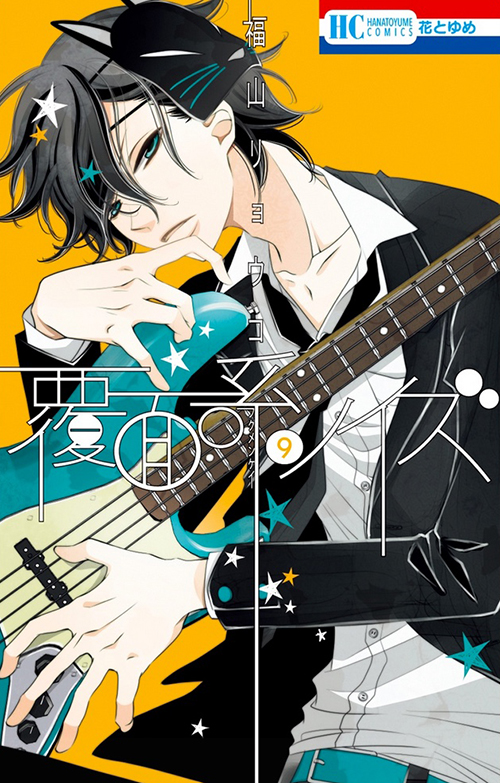 But the backbone of the series is definitely the music aspect. Nino’s journey toward becoming a stronger singer who tries to reach out for her audience and the other main characters’ developments as artists give the series an interesting focus beyond the romance aspect. The dynamics within Inohari make the manga fun and entertaining, as Nino/Alice, Yuzu, Miou, Haruyoshi and Kuro have a lively (but also emotional and complicated) chemistry among themselves. Their rise within the music scene is maybe not completely realistic but it doesn’t leave out the hard work, planning and practice it takes to compose, record and perform hit singles and albums. And it’s that last aspect, the live performances so powerfully put into images in the manga that lend Fukumenkei Noise an almost irresistable sense of pressing urgency and youthful energy. Fukuyama RyÅko relies a lot on her own research and photos she’s taking at concerts and festivals for her visual portrayal of Inohari as a live band. And it definitely pays off because as a reader you do feel the adrenaline rush both of the band and the audience – which is so important because as a manga, the series can’t rely on the key ingredient of the story, the music itself!
But the backbone of the series is definitely the music aspect. Nino’s journey toward becoming a stronger singer who tries to reach out for her audience and the other main characters’ developments as artists give the series an interesting focus beyond the romance aspect. The dynamics within Inohari make the manga fun and entertaining, as Nino/Alice, Yuzu, Miou, Haruyoshi and Kuro have a lively (but also emotional and complicated) chemistry among themselves. Their rise within the music scene is maybe not completely realistic but it doesn’t leave out the hard work, planning and practice it takes to compose, record and perform hit singles and albums. And it’s that last aspect, the live performances so powerfully put into images in the manga that lend Fukumenkei Noise an almost irresistable sense of pressing urgency and youthful energy. Fukuyama RyÅko relies a lot on her own research and photos she’s taking at concerts and festivals for her visual portrayal of Inohari as a live band. And it definitely pays off because as a reader you do feel the adrenaline rush both of the band and the audience – which is so important because as a manga, the series can’t rely on the key ingredient of the story, the music itself!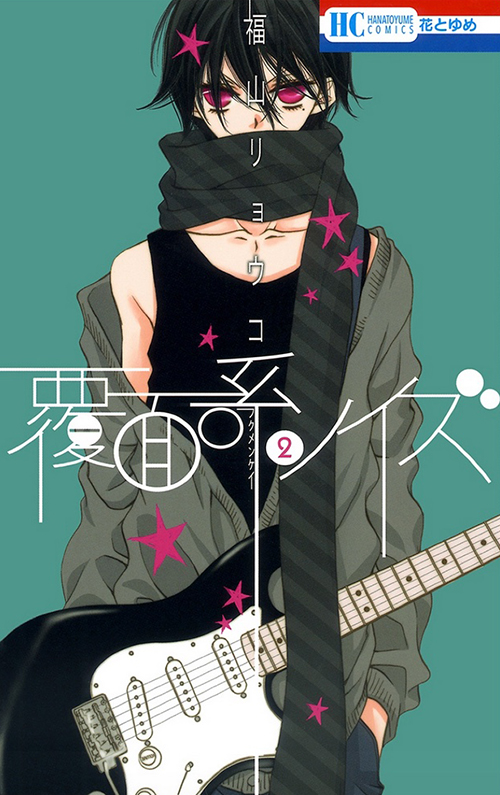 A very minor flaw I’ve noticed is the series is already quite long and there are parts where the plot stalls a little and doesn’t move along as quickly as you’d like. For example, the urgency and speed of the first two volumes are soon replaced by somewhat repetitive scenes of Nino/Alice running amok on stage with her voice, Nino running after Momo has heard her voice while Yuzu’s looking sadly after her, determined to make her voice his. We often get poetic monologues, with sometimes Nino’s and Yuzu’s thoughts running in synchronicity throughout a scene. This can be both a little overwhelming and confusing from time to time, but in the original Japanese version you can at least formally tell their lines apart as Yuzu’s are displayed in hiragana. At the same time, this adds to the sense of chaos and sheer NOISE in the manga which helps build up a very unique atmosphere. And ultimately, the slower chapters serve to build up tension until a change finally happens, for example when Nino overcomes her slump after the band’s first festival appearance and realizes she needs to become a better vocalist by training hard and trying to reach out to the audience in front of her.
A very minor flaw I’ve noticed is the series is already quite long and there are parts where the plot stalls a little and doesn’t move along as quickly as you’d like. For example, the urgency and speed of the first two volumes are soon replaced by somewhat repetitive scenes of Nino/Alice running amok on stage with her voice, Nino running after Momo has heard her voice while Yuzu’s looking sadly after her, determined to make her voice his. We often get poetic monologues, with sometimes Nino’s and Yuzu’s thoughts running in synchronicity throughout a scene. This can be both a little overwhelming and confusing from time to time, but in the original Japanese version you can at least formally tell their lines apart as Yuzu’s are displayed in hiragana. At the same time, this adds to the sense of chaos and sheer NOISE in the manga which helps build up a very unique atmosphere. And ultimately, the slower chapters serve to build up tension until a change finally happens, for example when Nino overcomes her slump after the band’s first festival appearance and realizes she needs to become a better vocalist by training hard and trying to reach out to the audience in front of her.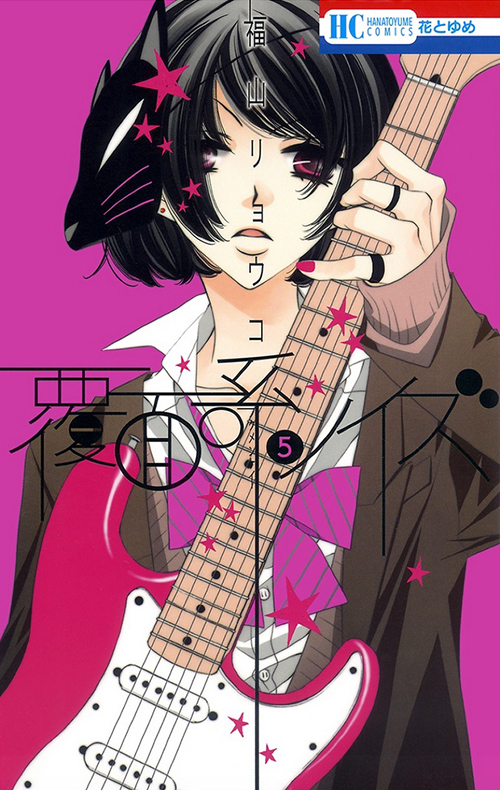 Momo and Yuzu both have complicated relationships with their mothers which is something we only realize bit by bit through hints dropped in short dialogues and backflashes. There are some really cute childhood scenes, especially for Yuzu and Nino. The scenes of their meetings at the beautiful shore of Yuigahama, when they’re kids and then later after they’ve met again, are really powerful. But there are comic elements too, with the constant joke being Yuzu and his omnipresent carton of milk because he’s quite vertically challenged and would love to be taller. We get slapstick elements, some fighting and bickering among the members, some idiosyncratic patterns of behaviour and speech from certain members, like Haruyoshi who refers to himself as atashi, a pronoun reserved for females, and uses a lot of female speech patterns because he grew up with 6 sisters :) And one thing I love is the portrayal of the friendship between the two Inohari girls, Nino and Miou, despite the fact that it’s Nino who gets all that attention from Miou’s crush Yuzu. (I shall forever worship at the shrine dedicated to Miou while everyone else is deciding whether they’re Team Momo or Team Yuzu ;) There’s also a cast of more or less charming minor characters, the Kuroneko band members, other artists and models they work with, the managers and producers, journalists and some fans who serve to shed light on the bands’ stories from their respective perspective, but they always remain somewhat sidelined in the presence of the triangle Nino-Momo-Yuzu.
Momo and Yuzu both have complicated relationships with their mothers which is something we only realize bit by bit through hints dropped in short dialogues and backflashes. There are some really cute childhood scenes, especially for Yuzu and Nino. The scenes of their meetings at the beautiful shore of Yuigahama, when they’re kids and then later after they’ve met again, are really powerful. But there are comic elements too, with the constant joke being Yuzu and his omnipresent carton of milk because he’s quite vertically challenged and would love to be taller. We get slapstick elements, some fighting and bickering among the members, some idiosyncratic patterns of behaviour and speech from certain members, like Haruyoshi who refers to himself as atashi, a pronoun reserved for females, and uses a lot of female speech patterns because he grew up with 6 sisters :) And one thing I love is the portrayal of the friendship between the two Inohari girls, Nino and Miou, despite the fact that it’s Nino who gets all that attention from Miou’s crush Yuzu. (I shall forever worship at the shrine dedicated to Miou while everyone else is deciding whether they’re Team Momo or Team Yuzu ;) There’s also a cast of more or less charming minor characters, the Kuroneko band members, other artists and models they work with, the managers and producers, journalists and some fans who serve to shed light on the bands’ stories from their respective perspective, but they always remain somewhat sidelined in the presence of the triangle Nino-Momo-Yuzu.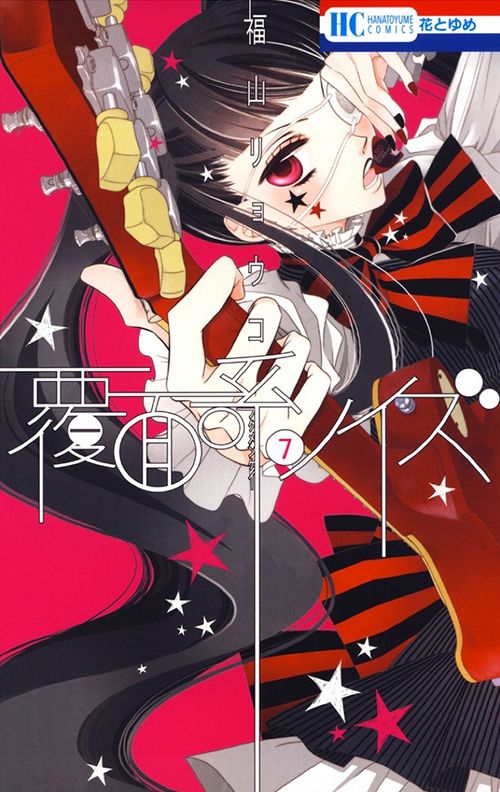 Fukumenkei refers to the fact that both Inohari and Kuroneko use masks, eye-patches and bandages to hide their true identities; this gives them very unique looks, one might say they look slightly visual-kei, with a gothic lolita-inspired Alice. Fukuyama’s forte as a mangaka are definitely her illustrations, especially the ones in color. (In that respect, it’s a real loss for the charms of the series that most of the color illustrations are printed just black and white in the tankÅbon versions and can only be fully enjoyed by magazine readers until an artbook is released.) These images match the aesthetics used for ‘real’ albums covers, concert posters, ads and magazine spreads perfectly, giving readers the chance to follow Inohari almost like a band that exists in real life. This experience will now become only stronger with
Fukumenkei refers to the fact that both Inohari and Kuroneko use masks, eye-patches and bandages to hide their true identities; this gives them very unique looks, one might say they look slightly visual-kei, with a gothic lolita-inspired Alice. Fukuyama’s forte as a mangaka are definitely her illustrations, especially the ones in color. (In that respect, it’s a real loss for the charms of the series that most of the color illustrations are printed just black and white in the tankÅbon versions and can only be fully enjoyed by magazine readers until an artbook is released.) These images match the aesthetics used for ‘real’ albums covers, concert posters, ads and magazine spreads perfectly, giving readers the chance to follow Inohari almost like a band that exists in real life. This experience will now become only stronger with 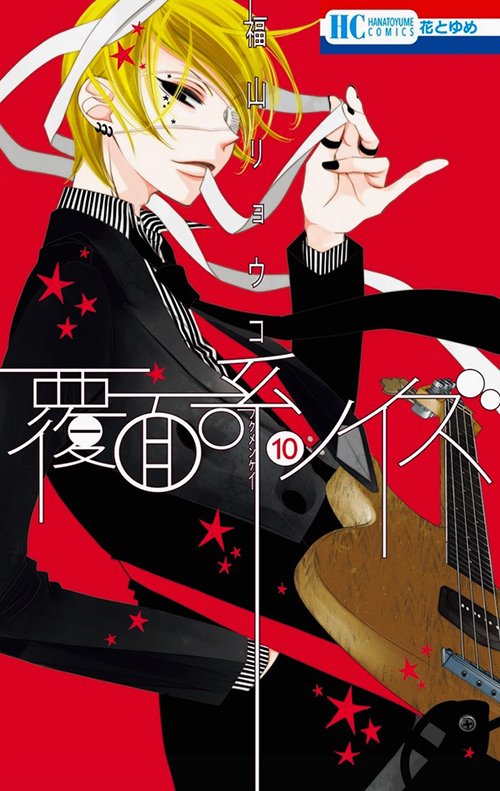 Fukumenkei Noise has the ability to captivate a wide readership, both female and male, despite being a shÅjo manga title. It might be similar to another HanaYume series in that respect, i.e. Takaya Natsuki’s Fruits Basket which was also able to reach even more people after it received its anime adaptation and it remains to be seen if Fukumenkei Noise can manage the same. And you cannot help but feel that Fukumenkei Noise also pays homage to the cult classic, the iconic, the one and only music and romance manga for girls by Yazawa Ai – the unfinished NANA! With the genre and a heroine called Nino which isn’t all that far from Nana, the shared name of the two heroines of Yazawa’s hit series, Fukumenkei Noise has been predestined for comparisons with the former. And it is definitely not wrong to call Fukumenkei Noise a NANA for middle schoolers, targeting mainly 13 or 14-year old girls, unlike NANA with its slightly older fan demographic. Fukumenkei Noise is fun, energetic and eye-catching but it sometimes lacks the depth and emotional scope of NANA as it never looks for too long into the abyss of desperation the way Yazawa’s unfinished masterpiece does.
Fukumenkei Noise has the ability to captivate a wide readership, both female and male, despite being a shÅjo manga title. It might be similar to another HanaYume series in that respect, i.e. Takaya Natsuki’s Fruits Basket which was also able to reach even more people after it received its anime adaptation and it remains to be seen if Fukumenkei Noise can manage the same. And you cannot help but feel that Fukumenkei Noise also pays homage to the cult classic, the iconic, the one and only music and romance manga for girls by Yazawa Ai – the unfinished NANA! With the genre and a heroine called Nino which isn’t all that far from Nana, the shared name of the two heroines of Yazawa’s hit series, Fukumenkei Noise has been predestined for comparisons with the former. And it is definitely not wrong to call Fukumenkei Noise a NANA for middle schoolers, targeting mainly 13 or 14-year old girls, unlike NANA with its slightly older fan demographic. Fukumenkei Noise is fun, energetic and eye-catching but it sometimes lacks the depth and emotional scope of NANA as it never looks for too long into the abyss of desperation the way Yazawa’s unfinished masterpiece does. → The second week of April marks the start of an
→ The second week of April marks the start of an 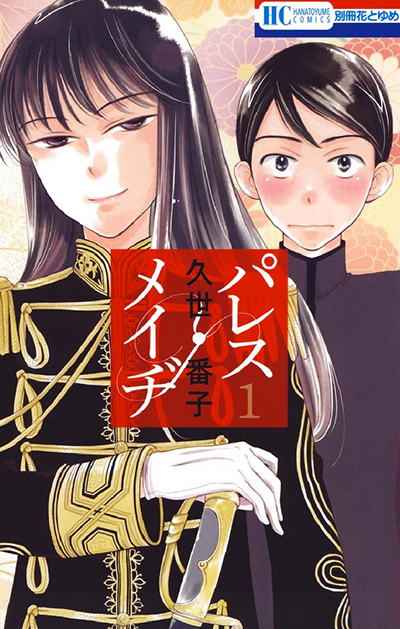 → The end of the month will bring readers the final chapter of Kuze Banko’s series Palace Meiji in Hakusensha’s Betsuhana (Bessatsu Hana to Yume), with its June issue in stores April 26. To commemorate the conclusion of the magazine’s number one title, Palace Meji will be getting the magazine’s cover, a color spread and a furoku fan book called “Palace no omoide” (literally “Memories of the Palace”) along with the last chapter. And I’m getting my tissues ready because I really enjoyed young hero Kimiyori’s years of training and working at Meiji Palace, serving the young, tough and beautiful (fictional) empress Akiko. 6 comic volumes filled with episodes of court life in alternative modern-meets-traditional Japan, subversions of gender roles and lots of action, human drama, warm humour and suspense have been published so far, already destined to become classic shÅjo manga material.
→ The end of the month will bring readers the final chapter of Kuze Banko’s series Palace Meiji in Hakusensha’s Betsuhana (Bessatsu Hana to Yume), with its June issue in stores April 26. To commemorate the conclusion of the magazine’s number one title, Palace Meji will be getting the magazine’s cover, a color spread and a furoku fan book called “Palace no omoide” (literally “Memories of the Palace”) along with the last chapter. And I’m getting my tissues ready because I really enjoyed young hero Kimiyori’s years of training and working at Meiji Palace, serving the young, tough and beautiful (fictional) empress Akiko. 6 comic volumes filled with episodes of court life in alternative modern-meets-traditional Japan, subversions of gender roles and lots of action, human drama, warm humour and suspense have been published so far, already destined to become classic shÅjo manga material.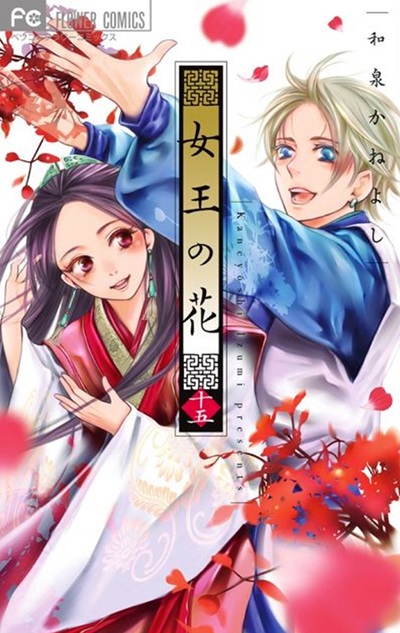 →
→